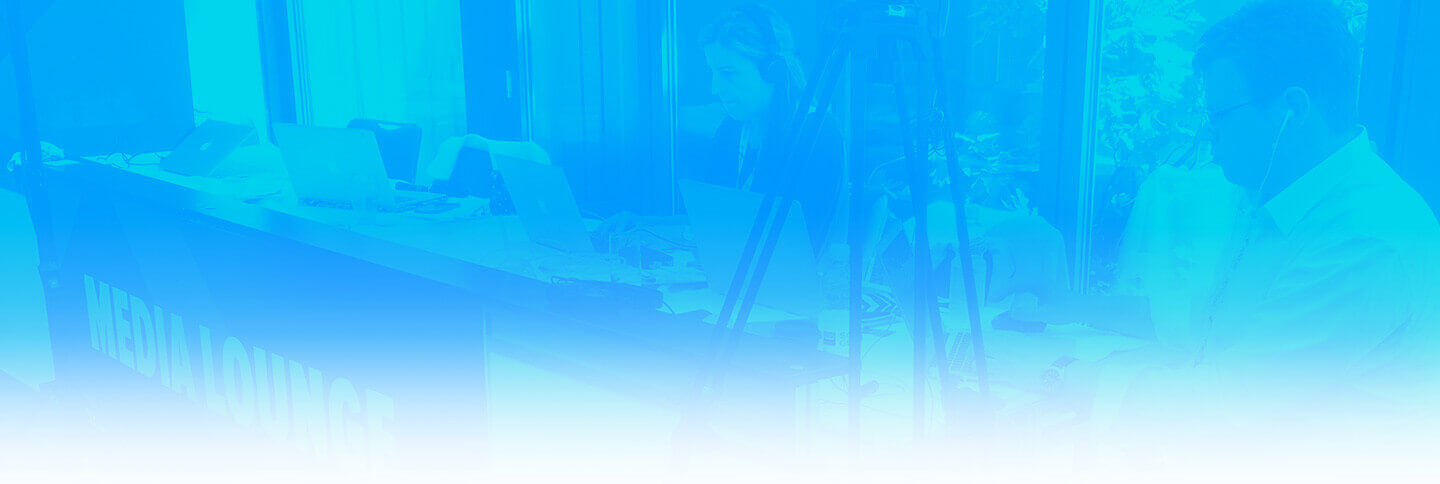Davos Agenda 2022: Connecting with audiences at virtual events
Covering live events is in our DNA at Formative – and over these two pandemic years, we’ve had to pivot to virtual event coverage, with our journalists and producers squirrelled away in their homes, crafting content from remote feeds and video coverage.
Our most recent project was last week’s coverage of the World Economic Forum’s Davos Agenda 2022. Usually we’d head to the snowy climes of Davos and Geneva to work on our output; this year, as with last, the team didn’t even have to take off their slippers.
This type of thought leadership event (where specialist, expert opinion is aired, shared and picked over) is even more important for communicators and business leaders as we get nearer to a post-pandemic world. We saw from the energy and discussion generated during COP26 in November that there is a real appetite for specialist insight and thinking.
And even though travel is starting to open up, networking in real life is limited and only slowly making a reappearance.
Lessons from the poster child
In a multiplatform world, where we’re deluged with rivers of information, high-quality content is of a premium – and content generated from large scale events is a swift and effective way to create tailored thought leadership that can engage a wider audience and amplify corporate messages.
The World Economic Forum is both a poster child and an outlier when it comes to content – it produces thousands of tweets, dozens of blogs and posts across a panoply of platforms every day to millions of followers with its organic content. It’s easy to be intimidated by the sheer volume of the Forum’s output, but there are lessons for all corporate communicators here, whatever the size of your organisation or the extent of your publication schedule.
For Davos 2022, the aim was to have a highlights blog running on the main Davos Agenda site during the event, alongside super fresh material delivered on Twitter, LinkedIn, Facebook and Insta, as well as YouTube. There was a focus on formats ie. this isn’t just about disseminating blogs, articles and copy – we needed to distribute and share material in a variety of ways.
It takes a team to cover all the bases
With world leaders and global CEOs speaking live, in special addresses or on panels, it takes teamwork to ensure the best quotes from each session are published quickly either into the main flow of the highlights blog and/or on WEF social channels. Specific writers, producers and subs are assigned to work on this four day event, each with clear responsibilities.
We’ve been covering Davos now for more than a decade so are well integrated as part of the wider team and have a clear system in place. Our journalists and social media specialists listen to the sessions, spotting key quotes and writing up tweets using video clips captured by the Forum’s live-clipping experts.
This is where it’s imperative that everyone in the coverage team is clear on what they are doing, and has all platforms covered. Our team communicates over Slack, ensuring that everyone knows what is being created, and where. Staying in touch is key to keeping the pace of output up.
Just focusing on a high top growth number is unsustainable, says @SecYellen of @USTreasury. We’re aiming for growth that’s inclusive and green #DavosAgenda pic.twitter.com/EbzNSChEZQ
— World Economic Forum (@wef) January 21, 2022
Engaging audiences with the most newsiest and relevant content
The highlights blog, similar to some that you see published by national newspapers when news is breaking, is a key tool in our content toolbox. It aggregates the most significant moments and allows the team of writers and journalists to share information in real time.
Live blog output and live tweeting is just the starting point of event coverage – working fast to deliver maximum amplification means that content needs to reach a much wider audience.
Our team will look out for ‘news lines’ (topics that we feel will be of interest to the target audience) and common threads running through sessions, for entries into a daily end-of-day highlights blog and fast-turnaround session write-ups which will be posted onto the main Forum website.
Session write-ups from Davos can often set the agenda for global discussion on issues, such as this piece on the future of the fight against COVID-19, or this coverage of the European Chips Act announcement by European Commission President Ursula von der Leyen.
All of the pieces are written with SEO firmly in mind – and shared on the Forum’s social media channels – to maximise engagement.
Keep content working long after the event has ended
Content generated from live events like this can be a virtual goldmine that has a life well beyond the days of the event itself.
The Forum’s digital team, for instance, will use the video clips and audio from each January event in Davos to extend the reach of the Forum, keeping it front-of-mind well after the last speaker has left the podium.
And it’s not all about text. A podcast team presents the highlights and an analysis of key sessions on Radio Davos, including a wrap-up of key themes to expect in 2022.
What will define 2022? The end of the pandemic? The return of inflation? Big action on climate change?
The experts from #DavosAgenda are on the #RadioDavos podcast, with @RobinPomeroyEd: https://t.co/p96AbY12Ai pic.twitter.com/4TzPM2W6KL
— World Economic Forum (@wef) January 27, 2022
Whilst steeped in the immediate coverage of each day’s sessions, the team will also be thinking of new ideas and themes to help drive conversation forward. Formative journalists will pitch and write explainer-style blogs on topics that they feel worthy of more attention, sometimes from the simplest of quotes, like this one on energy efficiency.
And some formats are consistently popular, and have in some ways come to define the Forum’s social media coverage. 30 social videos were created during this year’s event, garnering 18 million views.
This man lives in space!
Meet him here: https://t.co/K4qHPgDNng #DavosAgenda pic.twitter.com/bf0WqUsUOh
— World Economic Forum (@wef) January 21, 2022
About the author: Gay Flashman is the CEO and founder of Formative Content. Connect with her on LinkedIn here.
READ MORE
#Coronacomms: Turn your virtual presence into an engaging experience
#Coronacomms: Building a compelling virtual event – 4 key steps
#Coronacomms – Getting Virtual: tips & techniques to put life back into virtual communications

Related Articles

AI won’t destroy SEO – but it will massively change the game
“The reports of my death are greatly exaggerated,” Mark Twain is said to have told a newspaper reporter.

Where creativity and technology meet: a designer’s view on artificial intelligence
My favourite things usually exist where creativity and cutting edge technology meet.

What does the launch of Twitter-alternative Threads mean for B2B marketers?
Threads, a Meta-owned alternative to Twitter, is set to launch on Thursday.

Protecting your brand in the age of generative AI
Imagine a deep fake video supposedly of your CEO making a market-moving statement going viral on the web.



